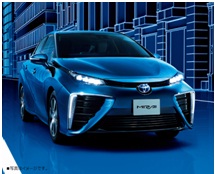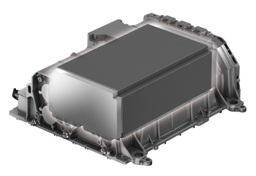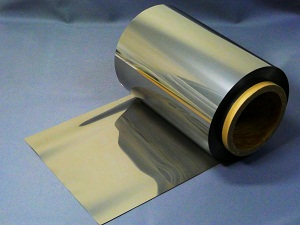Nippon Steel and Sumitomo Metal’s Titanium Foil Adopted in Toyota Motor’s “Mirai” Fuel-Cell Vehicle
Apr. 16, 2015
Nippon Steel and Sumitomo Metal Corporation
Nippon Steel and Sumitomo Metal’s Titanium Foil Adopted in
Toyota Motor’s “Mirai” Fuel-Cell Vehicle
Nippon Steel and Sumitomo Metal Corporation (Representative Director and President: Kosei Shindo, NSSMC) has developed a method of manufacturing special rolled titanium foil, which has excellent corrosion resistance against the corrosive environment in key parts inside fuel cells. As a result, this material has been adopted in parts for the fuel cell (the parts that make up the cells inside the fuel-cell stack*1) of the “Mirai” fuel-cell vehicle produced by Toyota Motor Corporation.
Titanium is a material that has various functions, namely, outstanding lightness, strength, and corrosion resistance. Thanks to these properties, it is used in a wide range of fields extending from aircraft, electric power and chemical plants, and automobile components to consumer products such as eye glasses and watches, thereby supporting societies in a broad range of ways. Since introducing a precision rolling mill at the Naoetsu Works in 1987, NSSMC has been providing high-quality, high-value-added titanium foil products*2. Based on the adoption of this product in the “Mirai” on this occasion, NSSMC will continue to cultivate new areas of demand and expand applications for titanium products. This includes accelerating the advance into highly innovative business sectors that will play a role in the hydrogen society expected in the future.
| Toyota Motor “Mirai” fuel-cell vehicle | Fuel-cell stack |
 |
 |
| (Images provided by Toyota Motor Corporation) |
(Images provided by Toyota Motor Corporation) |
| NSSMC’s titanium foil | |
 |
*1 Fuel cells are composed of objects called “cells” that are separated by a membrane electrode assembly (MEA), in which a catalyst is painted on a solid polymer electrolyte membrane. As the voltage of one cell is only 1V or less, several hundred cells are connected in a series to increase the voltage. The part that combines all the cells into one object is called a fuel-cell stack, and when a fuel cell is generally referred to, this indicates the fuel-cell stack. (Extracted from the website of Toyota Motor Corporation)
*2 NSSMC is able to manufacture titanium foil with a minimum thickness of approximately 0.02 mm and supplies titanium foil that is optimal for the needs of product users.


